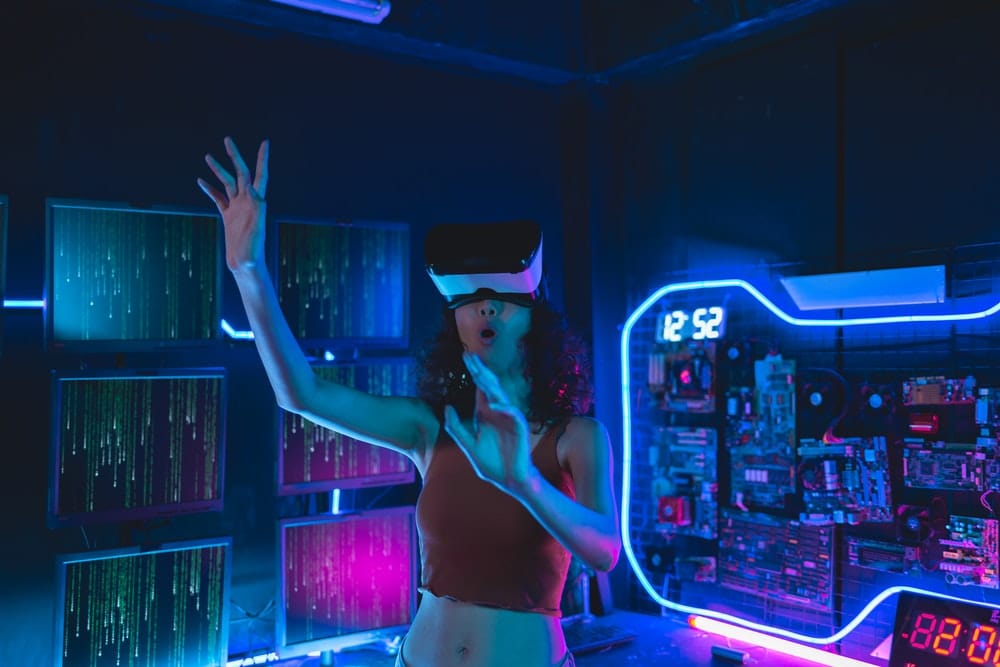With rapid advancements in technology, the aviation industry is witnessing a paradigm shift in the way pilot training programs are conducted. One of the most promising developments in this field is the integration of mixed reality simulators into the training curriculum. This blend of real and virtual environments provides an immersive learning experience that significantly enhances the training process.
Utilizing elements of both augmented reality (AR) and virtual reality (VR), mixed reality combines the best of both worlds. It merges the real physical environment with a virtual one, thereby allowing pilots to interact with both simultaneously. Let’s delve deeper into how mixed reality simulators are revolutionizing the aviation sector.
A lire en complément : What Innovations in Smart Eyewear Are Enhancing Visual Assistance for the Blind?
Understanding the Concept of Mixed Reality
At the intersection of virtual reality and the real world, mixed reality provides a unique learning environment that is highly interactive and immersive. It overlays digital information onto the physical world, thereby providing trainee pilots with an unprecedented learning experience.
Mixed reality could be perceived as a scale, anchoring the real world at one end and a completely virtual reality at the other. In between lies the vast spectrum of mixed reality which fuses real and virtual environments to create new visualizations where physical and digital objects co-exist and interact in real-time.
Dans le meme genre : Can AI Be Used to Predict and Prevent Cybersecurity Threats in Real Time?
The Role of Mixed Reality in Pilot Training
The integration of mixed reality into pilot training programs has the potential to significantly improve the learning experience for trainees. This technology enables realistic simulations, allowing pilots to practice complex maneuvers and procedures in a safe and controlled environment.
With mixed reality, pilots can interact with a 3D digital cockpit, operate virtual aircraft controls, and even respond to simulated air traffic control commands. This provides a comprehensive learning experience that prepares pilots for real-world scenarios, which conventional training methods may not be able to replicate.
The Benefits of Mixed Reality Simulators
The introduction of mixed reality simulators in pilot training programs offers several advantages. For one, it creates a risk-free environment where pilots can practice and master flying techniques without the fear of real-world consequences.
Secondly, these simulators provide an immersive learning experience. They blend real and virtual elements seamlessly, thereby providing trainees with a realistic and interactive training environment. This enhanced immersion aids in the retention of learned skills and knowledge, making the learning process very effective.
Finally, mixed reality simulators offer the possibility of unlimited repetition. This is crucial in pilot training since it allows pilots to practice until they have mastered the required skills. With traditional methods, this kind of repetition is often not feasible due to time and cost constraints.
The Future of Pilot Training with Mixed Reality
The usage of mixed reality in pilot training is still relatively nascent. However, its potential to transform the aviation industry is undeniable. With advancements in technology and increased adoption, the future of pilot training is set to become more efficient, effective, and safer.
Mixed reality simulators will enable more immersive and comprehensive training programs. They will allow pilots to practice scenarios that are difficult to replicate with conventional methods. Moreover, the use of this technology will help in standardizing training programs, thereby ensuring a consistent learning experience for all trainees.
Transforming The Aviation Industry with Mixed Reality
The incorporation of mixed reality into pilot training programs signifies a major leap forward in aviation technology. Its ability to provide a high degree of realism in a safe, controlled environment makes it an invaluable tool for training the next generation of pilots.
As technology continues to evolve, the aviation industry must keep pace. The integration of mixed reality represents a step towards a future where training is not only more immersive and practical but also more adaptable to the changing needs of the industry. It is a testament to the relentless pursuit of innovation that drives the aviation sector.
In conclusion, mixed reality simulators are not just transforming pilot training programs – they are paving the way for a new era of aviation. The future of pilot training lies in the seamless fusion of the real and the virtual, creating an immersive learning environment that equips pilots with the skills and knowledge they need to navigate the skies safely and efficiently.
Integration of Mixed Reality in the Air Force Training Programs
The application of mixed reality in pilot training also extends to the air force training programs. The dynamic nature of the aviation field requires that military pilots undergo specialized and rigorous training. The challenges they face in real-world scenarios are varied and complex, ranging from aerial combat to emergency evacuations. The air force, in particular, requires pilots to master high-stakes maneuvers that traditional flight simulators might not adequately prepare them for.
Mixed reality comes into play by providing a highly realistic and immersive learning environment for these pilots. It combines elements of virtual reality (VR) and augmented reality (AR) to create a virtual environment that closely mimics actual flight conditions. This includes simulating unpredictable weather conditions, unexpected equipment failure, and even hostile enemy attacks.
Additionally, mixed reality allows for the creation of large-scale, immersive training scenarios, such as multi-aircraft operations, which are difficult and costly to replicate in real-world conditions. With the technology’s ability to overlay digital information onto the real world, pilots can interact with a 3D holographic cockpit and respond to simulated air traffic control commands, providing a comprehensive training experience.
Furthermore, mixed reality enables the repetition of these complex scenarios until the pilots master the skills needed. This kind of repetition is usually not feasible with traditional methods due to the high risk and cost associated with such exercises. Therefore, the use of mixed reality in air force training programs enhances not only the quality of training but also the safety and efficiency of pilots.
Vertex Solutions and their Role in Mixed Reality Aviation Training
Vertex Solutions is a leading provider of cutting-edge technology training tools, including mixed reality simulators. These state-of-the-art training devices are designed to provide a highly realistic and immersive learning environment for pilots.
The company’s mixed reality simulators use advanced 3D graphics and motion tracking to create a virtual environment that closely resembles real-world flight conditions. With these simulators, pilots can practice navigating through turbulent weather, responding to simulated air traffic control commands, and executing complex maneuvers – all in a safe and controlled setting.
Moreover, Vertex Solutions’ simulators are equipped with a unique feature that allows trainees to view their performance in real-time. This feature provides valuable feedback, enabling pilots to identify areas of improvement and refine their skills.
Ultimately, the integration of Vertex Solutions’ mixed reality simulators into pilot training programs is a game-changer. It promises to enhance the quality of training, improve safety, and reduce the time and cost associated with traditional training methods.
Conclusion
The integration of mixed reality technology is poised to revolutionize the aviation industry, particularly in pilot training programs. Its ability to combine elements of the real and virtual world provides an unprecedented level of immersion and interaction, enhancing the learning experience for pilots.
Mixed reality simulators, such as those offered by Vertex Solutions, are transforming aviation training by providing a safe and controlled environment for pilots to practice complex maneuvers and procedures. Moreover, these simulators allow for unlimited repetition, enabling pilots to master the necessary skills without fear of real-world consequences.
As the aviation industry continues to evolve, mixed reality technology holds the potential to make pilot training more efficient, effective, and adaptable to the changing needs of the industry. In essence, mixed reality is not just changing the way we train pilots – it is paving the way for the future of aviation training.











